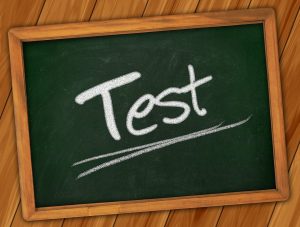 As expected, the results of Virginia’s 2020-2021 Standards of Learning tests taken by students reflect the extraordinary circumstances faced by students and schools last year and establish a baseline for recovery from the pandemic.
As expected, the results of Virginia’s 2020-2021 Standards of Learning tests taken by students reflect the extraordinary circumstances faced by students and schools last year and establish a baseline for recovery from the pandemic.
The 2020-2021 SOL test results — required by federal law and recently released by the Virginia Department of Education — followed trends on state tests nationwide.
Pass rates reflect disruptions to instruction caused by the pandemic, decreased participation in state assessment programs, pandemic-related declines in enrollment, fewer retakes, and more flexible “opt-out” provisions for parents concerned about community spread of COVID-19. The SOL results also reflect disproportionate nationwide impacts across all student groups, especially African American students, Hispanic students, economically disadvantaged students, students with disabilities and English learners.
“What matters now is where we go from here, and we will use the data from the SOLs to identify the unique needs of every learner as our schools resume in-person instruction for all students,” Superintendent of Public Instruction James Lane said.
The commonwealth’s SOL testing in 2019-2020 was cancelled, which means the 2021 SOL tests were the first state assessments administered in two years.
Students were required to take state assessments in school buildings to maintain testing security protocols. In a typical school year, participation in federally required tests is usually around 99 percent. In tested grades in 2021, 75.5 percent of students took the reading assessment, 78.7 percent took math, and 80 percent took science.
In addition, significantly fewer students retook SOL tests during 2020-2021 because of the waiver of state accreditation for 2021-2022, and the flexibility for students granted by the Board of Education in its emergency guidelines for the awarding of verified credits for graduation. Students are allowed to retake SOL tests if they fail their first attempt by a small margin. Retakes typically account for an up to 5% increase in school pass rates following first attempts.
The SOL pass rates in 2020-2021 were anticipated by school divisions and VDOE, given the impact of the pandemic as reported on local assessments administered earlier in the school year. Pass rates in federally required SOLs are 69 percent for reading, 54 percent for mathematics, and 59 percent for science. Last year was not a normal school year for students and teachers, in Virginia or elsewhere, so making comparisons with prior years would be inappropriate.
“Virginia’s 2020-2021 SOL test scores tell us what we already knew—students need to be in the classroom without disruption to learn effectively,” Lane said. “The connections, structures, and supports our school communities provide are irreplaceable, and many students did not have access to in person instruction for the full academic year. We must now focus on unfinished learning and acceleration to mitigate the impact the pandemic has had on student results.”
At the state level, the 2020-2021 SOL results will inform initiatives and policies to help schools and students recover from the disruptions to teaching and learning caused by COVID-19.
Recovery efforts are supported by an infusion of state and federal funding for the commonwealth’s public schools. In May, Gov. Ralph Northam announced $62.7 million in Virginia LEARNS Education Recovery grants to help school divisions expand and implement targeted initiatives to address the impact of the coronavirus pandemic on student learning. The Virginia LEARNS grants included funds to address unfinished learning through the following strategies:
Increased in-person instruction and small-group learning.
Targeted remediation, extended instruction, and enrichment.
Strategic virtual learning, technology, and staff training.
Social-emotional, behavioral, and mental health supports for students and staff.
Alternate learning opportunities.
Student-progress monitoring and assessment.
Planning and implementing year-round or extended-year calendars.
Additionally, $147 million from the federal American Rescue Plan’s Elementary and Secondary School Emergency Relief Fund are required to be used by the commonwealth to support instructional recovery efforts. The funding includes $105 million to address unfinished learning, $21 million for evidence-based afterschool programs, and $21 million for evidence-based summer learning. Details on the uses of these funds are forthcoming.
At the local level, SOL results are one of many tools that provide teachers, principals and superintendents with information on where students are excelling, and where they are struggling in order to design instruction and supports that meet their unique academic needs.
“While the impact of the pandemic is clear, the SOL data from last year also highlights inequities between student groups,” Lane said. “VDOE remains resolute in its commitment to supporting educators to close these achievement gaps and help all students succeed in the classroom. Virginia is fortunate to have world class teachers and school leaders that continue to demonstrate their ability to successfully navigate these ongoing challenges and help every student thrive.”
In addressing unfinished learning from the pandemic, VDOE and school divisions are emphasizing acceleration, not remediation. Acceleration maintains advancement trajectories for students by combining grade-level content with the teaching of skills and concepts not mastered during 2019-2020 and 2020-2021.
Data on the performance of students who participated in SOL testing during 2020-2021 — including pass rates for schools and school divisions — is available on the VDOE website and on VDOE’s School Quality Profile reports for schools, divisions and the commonwealth. As Lane stated in April, the focus of SOL testing during 2020-2021 was on collecting data to identify the academic needs of students and inform local and state efforts to help students recover academically from the impact of the coronavirus pandemic.
While the department has reported the results of the 2020-2021 SOL tests, accreditation ratings for the 2021-2022 school year will not be calculated. All schools will have the rating “Accreditation Waived,” as during 2020-2021.





